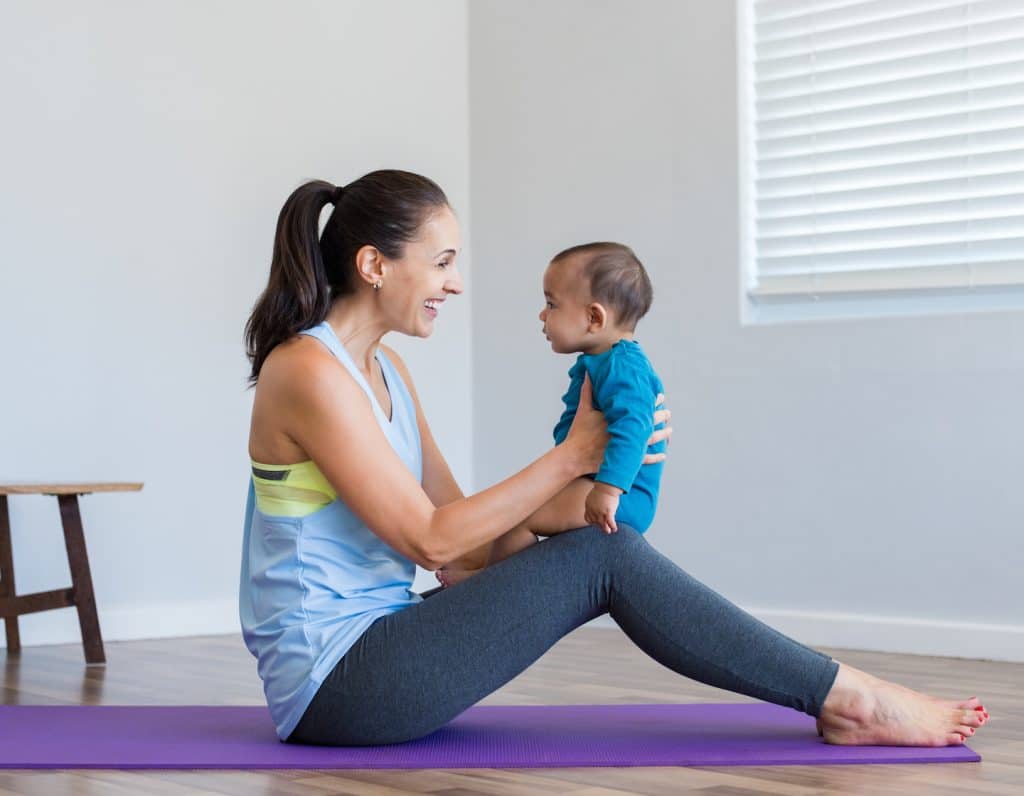
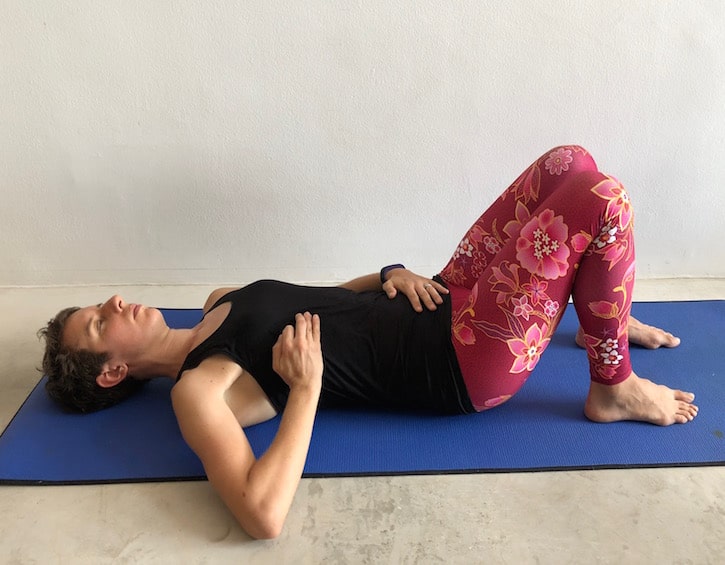
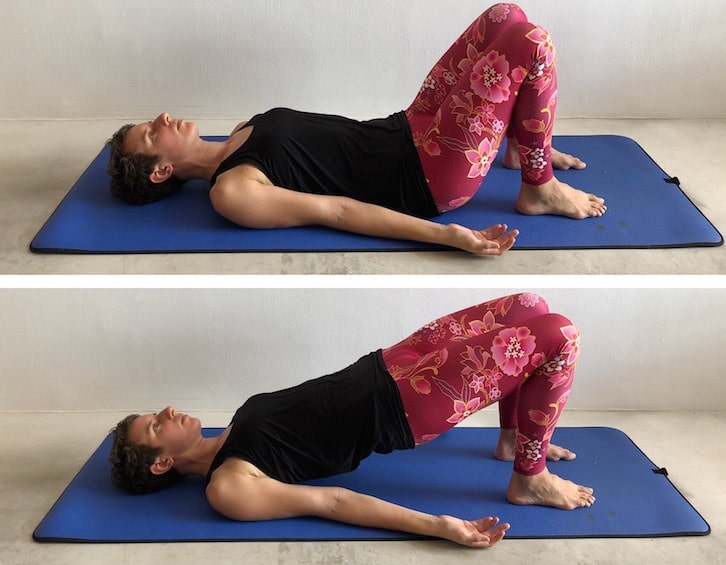
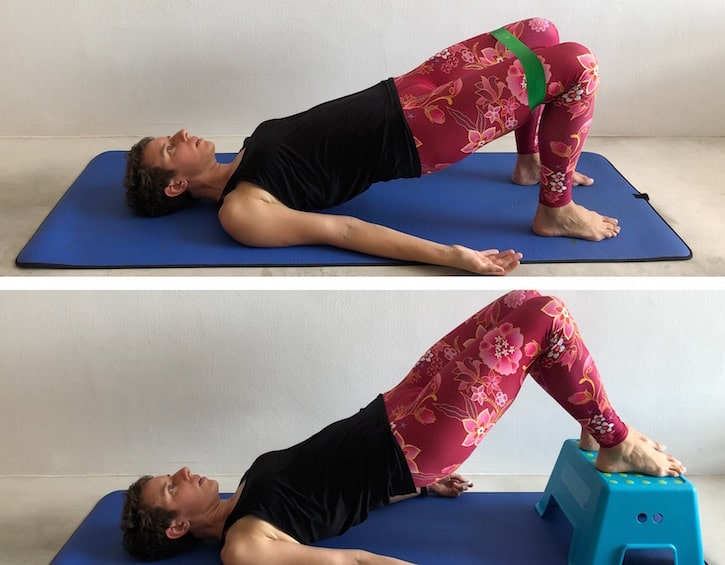
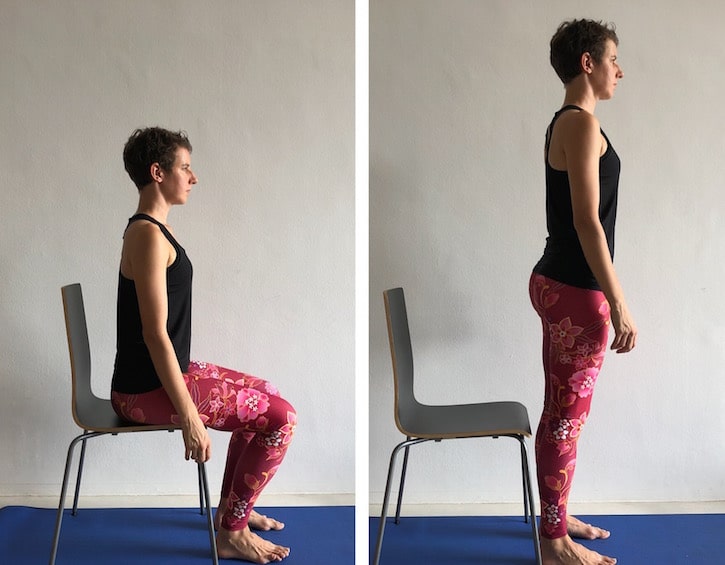
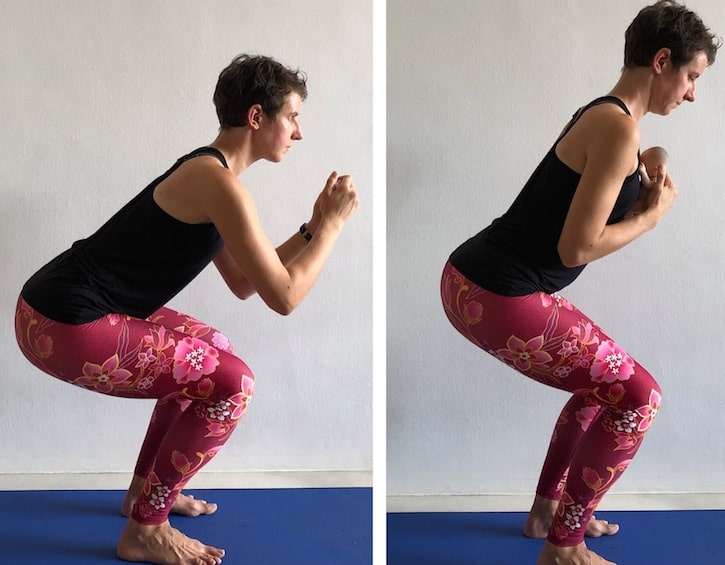
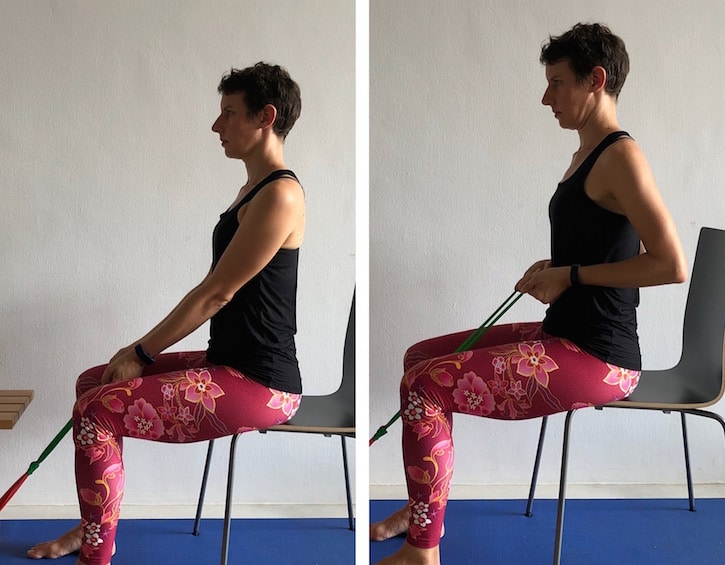
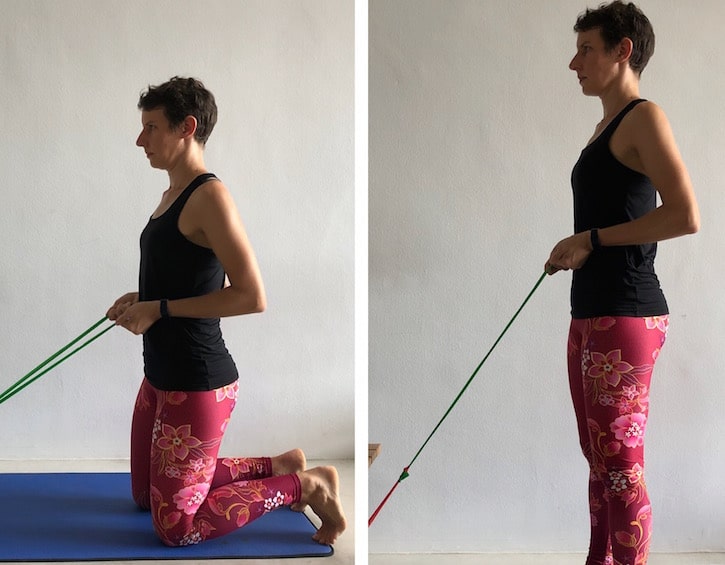
Postnatal fitness expert Holly Kuzmiak-Ngiam explains three strength moves that new mamas can do right after giving birth
“I just had a baby. I want to move. What can I do safely?” This is a question I’m frequently asked. My first answer is: Eat and rest. Seriously — those are the best two things you can do for your immediate recovery. But if you find yourself wanting more (if not, that’s OK – stay in the rest and recover stage as long as you need), my recommendations for new mums are: Short walks, gentle neck and shoulder stretches, and a few simple breath-and-move exercises…which I’m sharing here today.
How soon can you start? The coordinated breath can be practiced immediately after delivery. The foundational (first) options for glute bridges, squats, and rows given here can generally be started 2-4 weeks after delivery (likely a bit longer after C-section), IF you aren’t feeling residual pain from delivery.
Why can you start before the 6-week clearance from the OB/GYN? Well, what I describe here are ways to move better in your daily routine (like, standing up out of a chair). When performed correctly, with an awareness of breath, they are the foundation for stronger, safe movement in your everyday life — and that doesn’t have to wait for your 6-week check-up.
This short routine is designed to complement your life with a new baby and improve physical and mental health, not leave you exhausted, sweaty, and leaking urine (in fact, it can help guard against that last bit). For those of you beyond the early postpartum period, please try the foundational movement (first photo), then add challenge with the adjustments described (second photo).
And of course, if you have specific challenges or needs, are looking for a more comprehensive program, or want someone to check your form, a fitness professional with experience working with post-natal populations would be a great help to you!
Read More:
Five Things I Wish Mamas Knew About Postpartum Movement
What to Expect at Your First Postnatal Physio Appointment
Five Pelvic Floor and Perinatal Experts to Follow on Instagram
Why: Breathing and pelvic floor function are intertwined, and both are challenged in the postpartum period. Gently reconnecting abdominal function to the breath is calming, and is the strategy we build on when bringing any movement back into your routine.
*Note: Any postnatal fitness professional who IS NOT coaching your breath with your abdominal function is doing you a disservice. Please find a women’s health physical therapist and/or a trainer who can address this as the foundation for your rehab and return to activity.
How:
- Lay on your back with knees bent, feet hip width apart.
- Place one hand on the side of your ribcage and the other on your belly.
- Inhale and gently expand BOTH hands – ribs filling and opening outward, belly relaxing and rising gently, pelvic floor releasing slightly. A pelvic floor relaxation feels like a slight softening in your anus and vagina – like that whole area (your perineum is a good focus point) is moving slightly downward.
- Exhale and gently feel ribs move in, belly gently pull in, and pelvic floor lift. A pelvic floor lift feels like a slight tightening in your anus and vagina (some like the cue “lift a bean with your vagina”).
- When you feel like you can do this comfortably on your back, try changing position: side-lying, then seated, then standing.
How Many: 10 breaths, 1-2 times per day
*Please notice my emphasis on the word “gently”. This is not Olympic Pelvic Floor Exercise. MORE contraction isn’t desirable at this point – a slight softening and gentle contraction are your goal. If you’re unsure about how to do this, please make an appointment with a women’s health physio!
What: Glute Bridge
Why: The sitting, slouching, and hunching of pregnancy and new motherhood often leads to weak glutes (aka the flat “mum butt”). But strong glutes are crucial for good pelvic floor function. This exercise fires up those bum muscles to help you build a stronger butt.
How:
- Lay on your back with knees bent, feet hip width apart.
- Inhale (expand).
- Start exhale (gentle contraction), and press into feet to lift hips up. Think about creating a long line from shoulders to knees. Gently lower hips back to ground.
How Many: 10 reps, 1-2 times/day
- Change breathing slightly: Exhale to raise hips, Inhale to lower hips.
- Top: Add a mini band just above your knees (a yoga strap or scarf will work as well). Gently press thighs outward into the band throughout the movement. (left photo)
- Bottom: Place feet on slightly elevated surface (~10-15 cm to start) and perform movement, with or without band.
Why: Coordinating pelvic floor contraction with movement is crucial for training its automaticity (ability to respond automatically to your movements, especially quick or strong ones). The low portion of a squat gently stretches the pelvic floor for slightly relaxation, while the work of pressing upward syncs with a gentle contraction.
How:
- Sit tall in a chair, feet on floor, hip width apart.
- Inhale (expand).
- Start exhale (gentle contraction), and press into feet to push up to standing. Avoid excessive lean forward – use the push from legs to power you up.
- Inhale (expand) and return to sitting slowly pushing bum back and lowering with control to the chair. Avoid collapsing or crashing onto chair.
How Many? 10 reps, 1-2 times/day
- Repeat without pause, and putting less weight on chair.
- Left photo: Remove chair entirely. Inhale to lower, exhale and press up to standing. (left photo)
- Right photo: Add a light weight (light hand weight, laundry detergent container, baby)
Why: New moms spend lots of time rocking, cradling, feeding – often with shoulders hunched forward. Rows work the opposite muscles, in the back, to help you sit and stand tall and breath more deeply.
How:
- Set up a light resistance band (or use cable machine at the gym), and position your chair so that there is light tension in the band when your arms are extended forward. Sit tall on the edge of a chair, feet flat on the floor.
- Inhale (expand).
- Start exhale (gentle contraction) and pull back on the band, elbows going back behind you and a gentle squeeze between your shoulder blades.
- Inhale (expand) and slowly return to starting position.
How Many? 10-15 reps, 1-2 times/day
- Use a heavier resistance band/more weight.
- Perform movement from a kneeling position, toes tucked under for stability. (left photo)
- Perform movement from a standing postion, feet hip width apart. (right photo)
There you have it — Three of my favorite strength moves for new mums. Feel free to reach out if you have any questions!






 View All
View All




 View All
View All









 View All
View All







